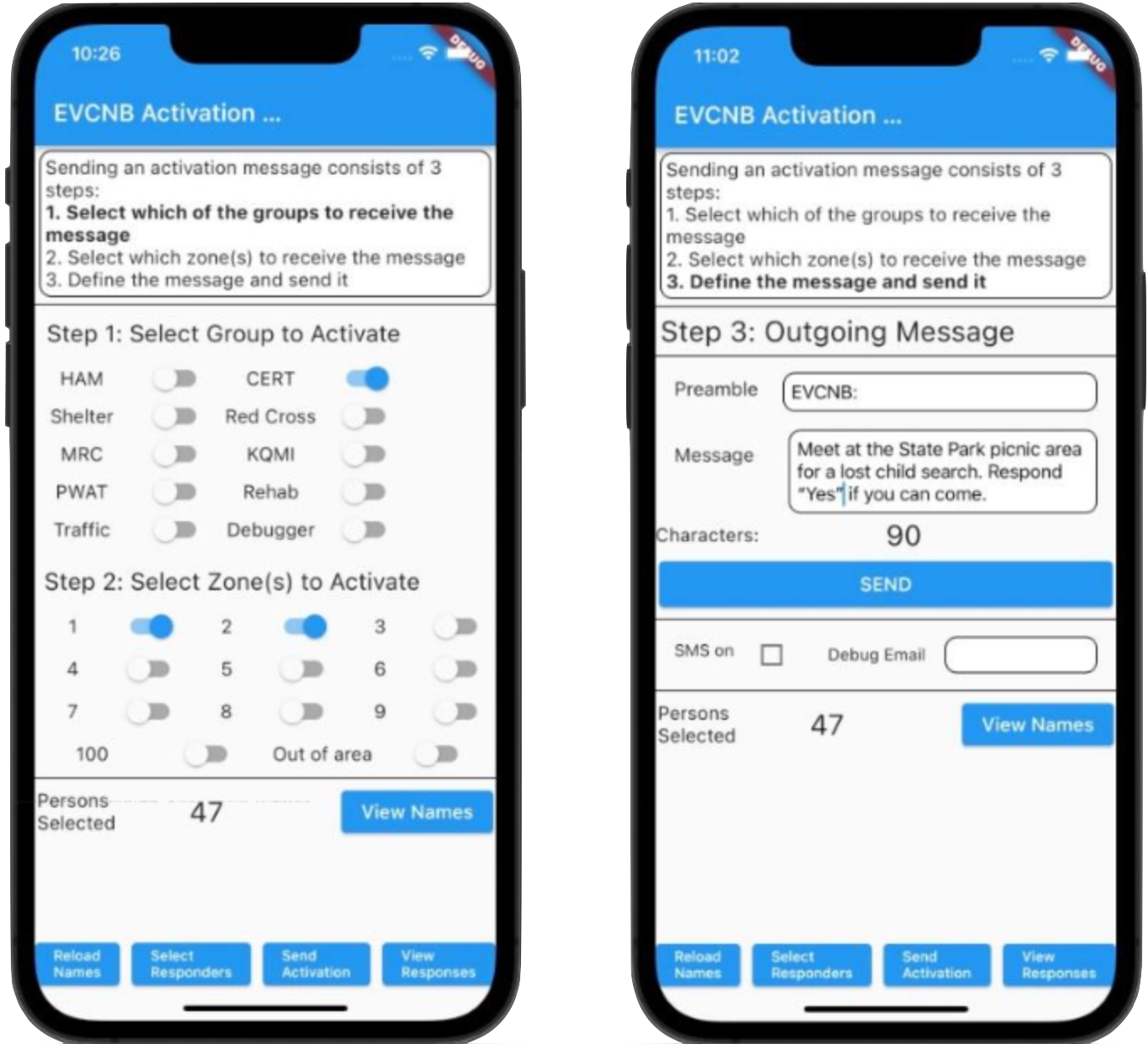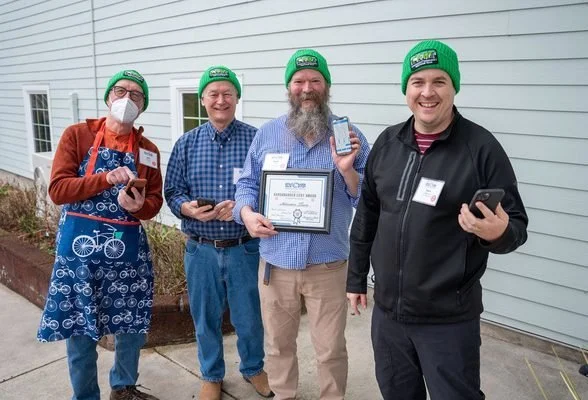EVCNB Team creates the TEAM Activation App
Steve Case
Imagine a sparkling August day on Manzanita beach. Kites are flying, kids are swimming, and dogs are running around. Suddenly, a woman cries out for her child. Soon she’s calling 911 and setting into motion a chain of actions to help find her child.
The first line of response in a lost child event is the police department. They start to set up a search. It’s a small department, so they need more help. They contact one of the leaders of the Emergency Volunteer Corps of Nehalem Bay (EVCNB). She in turn contacts or activates the set of volunteers who have trained to be CERTs. Community Emergency Response Team (CERT) is a nationally distributed volunteer training program for helping in emergencies.
A lost child on a beach is a scary prospect and quick response is important. EVCNB activates the CERTs by sending text messages to the CERTs in Manzanita, telling them where to go and what to do. We do so using a cell phone app developed in-house called TEAM (Team Emergency Activation Manager), which allows us to quickly send a text message to a selected group of volunteers. When the EVCNB leader needs to send out a text message, the TEAM app allows him or her to use a cell phone to select the group of volunteers, enter the text of the message, then see responses as they come back in.
There’s An App For That…Isn’t There?
EVCNB developed the TEAM app starting in 2020 because nothing available seemed to fit our needs – they were either aimed at a larger population or too expensive. It needed to be inexpensive (ideally free), easy to use for anyone with a cell phone, and specific to the EVCNB volunteer population. That population consists of an overlapping set of groups, such as CERTs, Medical Reserve Corps (MRC), Ham Radio operators, and Shelter volunteers. Each person is assigned to one of 9 geographic zones based on address, which represent the reception range of the hand-held radios (Yellow Radios) which many volunteers have.
On startup, TEAM displays a set of toggle buttons to select which group or groups should receive a text, and a set of toggles for the zones desired. Once selected, the user can go to the “Send Activation” screen to enter the message text and send it. The message will then go out to the cell phone number of each of the selected recipients. As people see the text on their phones, they can respond whether they are available to help. There’s a preamble to the message (normally “EVCNB:”) which will alert the recipient that this is important and not spam.
The TEAM app is coded using the open-source packages Flutter and Dart, which allow use on both iOS and Android based cell phones. The volunteer records are stored in an online database which the app checks each time it runs. The only commercial component in TEAM is the Twilio cell phone API, for which we pay a small fee. The Twilio API allows sending text messages via the internet to a server, which then sends the SMS messages using its own phone number.
The approach used by the TEAM app has some limitations, primarily that it requires the internet to be available on the user’s phone and that cell service is working. One of EVCNB’s main missions is preparing for the “big one”, a Cascadia subduction zone earthquake. It is probable that neither the internet nor cell phones will work in that event. But for more common problems such as a lost child on the beach, the TEAM app can save some valuable time.
TEAM was developed by (pictured l-r) John Beaston (database management, report creation and data export), Steve Case (application development), Brad Hart (system requirements, testing, documentation and training) and Mark Adamcin (system architecture and application deployment).
The TEAM team was honored for their achievement, receiving the William Reid "Bill" Harshbarger CERT Award for Leadership and Excellence for 2022.


